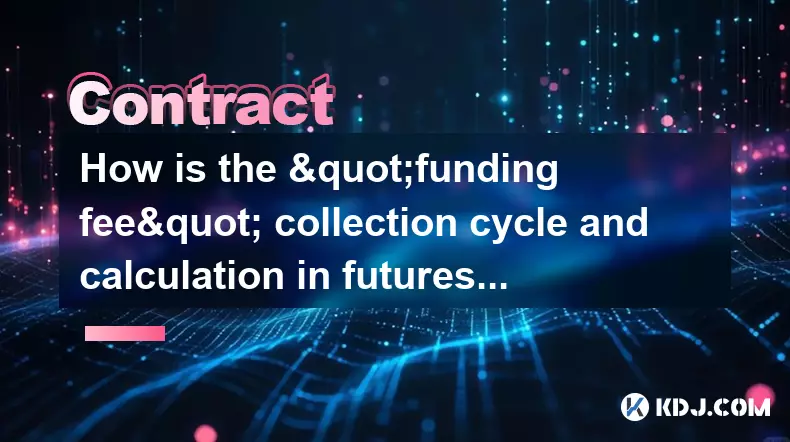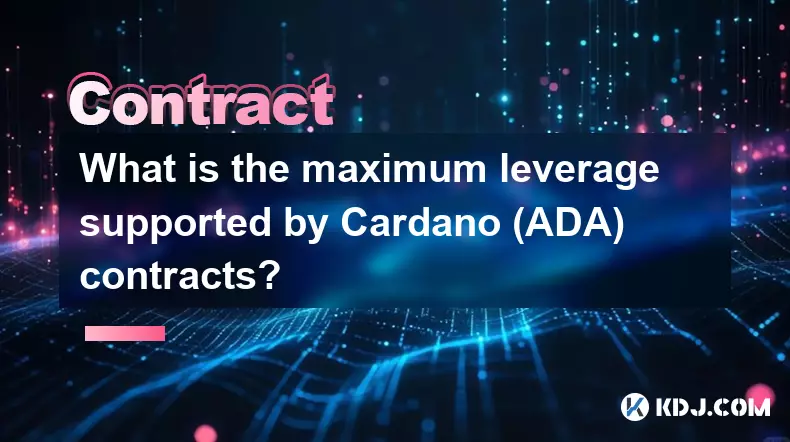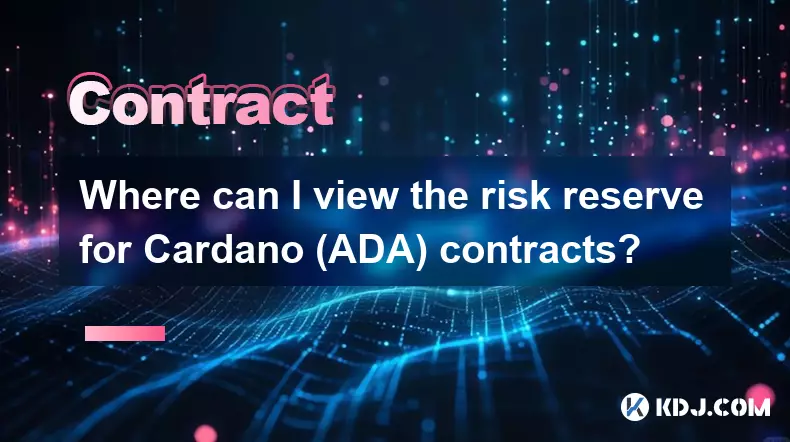-
 bitcoin
bitcoin $112195.049338 USD
2.42% -
 ethereum
ethereum $4124.915858 USD
2.81% -
 tether
tether $1.000570 USD
0.02% -
 xrp
xrp $2.861568 USD
2.25% -
 bnb
bnb $1000.346670 USD
3.04% -
 solana
solana $209.070819 USD
3.38% -
 usd-coin
usd-coin $0.999870 USD
0.02% -
 dogecoin
dogecoin $0.235379 USD
2.65% -
 tron
tron $0.335681 USD
-0.20% -
 cardano
cardano $0.803501 USD
3.38% -
 hyperliquid
hyperliquid $47.120881 USD
3.56% -
 chainlink
chainlink $21.501300 USD
3.44% -
 ethena-usde
ethena-usde $1.000571 USD
0.02% -
 avalanche
avalanche $29.793378 USD
3.62% -
 stellar
stellar $0.366964 USD
2.42%
How is the "funding fee" collection cycle and calculation in futures trading?
Funding fees in crypto futures are periodic payments between long and short traders to align contract prices with spot, occurring every 8 hours on major exchanges.
Sep 20, 2025 at 12:00 am

Funding Fee Mechanism in Crypto Futures Trading
1. Funding fees are periodic payments exchanged between long and short position holders in perpetual futures contracts. Unlike traditional futures, perpetual contracts do not have an expiration date, so funding rates help tether the contract price to the underlying asset’s spot price. This mechanism prevents prolonged divergence between the two prices.
2. The collection cycle for funding fees typically occurs every 8 hours on most major exchanges such as Binance, Bybit, and OKX. These intervals are fixed at 00:00 UTC, 08:00 UTC, and 16:00 UTC. Traders with open positions at these timestamps are subject to the fee transfer based on the prevailing funding rate.
3. If the funding rate is positive, long position holders pay short position holders. This usually happens when market sentiment is bullish and longs dominate, pushing the futures price above the spot price (a condition known as 'contango'). Conversely, a negative funding rate means shorts pay longs, which tends to occur during bearish sentiment or when the futures price trades below spot ('backwardation').
4. The actual fee amount depends on the size of the position and the current funding rate. For example, if the funding rate is 0.01% and a trader holds a $10,000 long position when the rate is positive, they will pay $1 to short position holders. The exchange automatically deducts this amount from their margin balance.
5. It's important to note that traders who close their positions before the funding timestamp avoid paying or receiving the fee. Day traders or those using tight risk management often time their exits to avoid adverse funding charges, especially in highly leveraged scenarios where cumulative fees can erode profits.
Calculation Components of Funding Fees
1. The funding rate itself is composed of two parts: the interest rate component and the premium index. The interest rate portion is usually negligible in crypto markets, often set close to zero since most platforms assume the cost of holding crypto is minimal compared to fiat-based instruments.
2. The premium index reflects the difference between the perpetual contract price and the underlying spot index price. When the contract trades significantly above the spot price, the premium rises, leading to higher positive funding rates. This incentivizes traders to open short positions or close longs, thereby bringing the price back in line.
3. Exchanges use a formula that includes the premium index and a clamp mechanism to prevent excessive volatility in funding rates. The clamp sets upper and lower bounds, ensuring that even in extreme market conditions, the funding rate does not reach unreasonable levels that could trigger mass liquidations.
4. The final funding rate is published prior to each settlement period, allowing traders to anticipate potential costs. Some platforms display the next estimated funding rate, giving users a preview of whether they will pay or receive funds in the upcoming cycle.
5. Funding fees are not transaction fees; they are transfers between traders mediated by the exchange. The platform does not take a cut from this payment, making it a zero-sum game among market participants.
Impact of Funding Rates on Trading Behavior
1. Sustained high positive funding rates can signal over-leveraged long positions across the market. Sophisticated traders monitor these rates as contrarian indicators—extremely high rates may precede price corrections as longs get liquidated or exit to avoid mounting fees.
2. Arbitrage opportunities arise when funding rates deviate significantly. Traders may go long on spot while opening a short on futures to collect funding payments, effectively earning yield while remaining market-neutral. This practice increases market efficiency over time.
3. In volatile events such as macroeconomic announcements or exchange outages, funding rates can spike erratically. During such periods, traders with large open positions face increased risk not only from price swings but also from unexpected funding costs that compound over multiple cycles.
4. New traders often overlook funding fees when entering long-term perpetual positions, mistakenly treating them like spot holdings. This can lead to significant hidden costs, particularly in trending markets with persistent one-sided sentiment.
5. Some trading bots are specifically designed to optimize entry and exit timing around funding clocks. These algorithms aim to hold positions just before funding settlements if expecting to receive fees, or close and reopen after paying, minimizing net outflows.
Common Questions About Funding Fees
What happens if I have both long and short positions during funding?The net position determines your funding fee. If your long exposure exceeds your short, you'll pay as a net long holder. Positions are evaluated per contract pair, so offsetting positions on different pairs won't cancel out fees.
Can funding rates be predicted accurately?While exact values are hard to predict, trends can be inferred from order book depth, open interest changes, and spot-futures basis. High open interest in longs combined with rising prices often correlates with increasing funding rates.
Do all crypto derivatives exchanges use the same funding schedule?Most follow the 8-hour model, but some niche platforms may use hourly or 12-hour cycles. Always verify the specific exchange’s funding timetable before initiating a trade.
Are funding fees charged on isolated margin mode?Yes, funding fees apply regardless of margin mode. Whether using isolated or cross margin, any open position at the funding timestamp will be subject to the fee based on the prevailing rate.
Disclaimer:info@kdj.com
The information provided is not trading advice. kdj.com does not assume any responsibility for any investments made based on the information provided in this article. Cryptocurrencies are highly volatile and it is highly recommended that you invest with caution after thorough research!
If you believe that the content used on this website infringes your copyright, please contact us immediately (info@kdj.com) and we will delete it promptly.
- Citi's Token Services: Clearing the Path for 24/7 Global Payments
- 2025-09-30 04:45:16
- ADA, Mutuum Finance, and Cardano Pattern: Navigating Crypto Opportunities Like a New Yorker
- 2025-09-30 04:45:16
- Bitcoin, XRP, and 250x Gains: Is MAGACOIN FINANCE the Next Big Thing?
- 2025-09-30 04:50:01
- Heada, Shiba inu, and Blockddddddded Faucet: A Crypto Trifecta
- 2025-09-30 05:05:11
- Citi's Token Services and 24/7 USD Clearing: A New Era for Global Payments
- 2025-09-30 04:50:01
- Uniswap (UNI) Price Check: Navigating Channel Targets and Market Sentiment
- 2025-09-30 05:05:11
Related knowledge

What is the maximum leverage supported by Cardano (ADA) contracts?
Sep 30,2025 at 03:37am
Understanding Leverage in ADA Derivatives Trading1. Leverage in cryptocurrency futures and perpetual contracts allows traders to control larger positi...

How do I use the scheduled order feature in Cardano (ADA) contracts?
Sep 28,2025 at 10:18pm
Understanding Scheduled Orders in Cardano Smart ContractsCardano operates on a proof-of-stakes consensus mechanism and uses the Plutus scripting langu...

Where can I view the risk reserve for Cardano (ADA) contracts?
Sep 29,2025 at 09:19pm
Risk Reserve Overview in Cardano (ADA) Ecosystem1. The concept of a risk reserve within the Cardano blockchain does not align with traditional central...

How do I enable the "scalping-only" mode for Cardano (ADA) contracts?
Sep 24,2025 at 03:19am
Understanding Scalping Strategies in Crypto Derivatives1. Scalping in cryptocurrency trading refers to executing multiple short-term trades within min...

What is the settlement time for Cardano (ADA) contracts?
Sep 28,2025 at 04:18am
Understanding Cardano's Contract Settlement Mechanism1. Cardano operates on a proof-of-stake consensus model known as Ouroboros, which fundamentally i...

How do I add margin to Cardano (ADA) contracts?
Sep 27,2025 at 07:54pm
Understanding Margin in Cardano (ADA) Smart ContractsCardano operates on a proof-of-stake blockchain that supports smart contracts through its Plutus ...

What is the maximum leverage supported by Cardano (ADA) contracts?
Sep 30,2025 at 03:37am
Understanding Leverage in ADA Derivatives Trading1. Leverage in cryptocurrency futures and perpetual contracts allows traders to control larger positi...

How do I use the scheduled order feature in Cardano (ADA) contracts?
Sep 28,2025 at 10:18pm
Understanding Scheduled Orders in Cardano Smart ContractsCardano operates on a proof-of-stakes consensus mechanism and uses the Plutus scripting langu...

Where can I view the risk reserve for Cardano (ADA) contracts?
Sep 29,2025 at 09:19pm
Risk Reserve Overview in Cardano (ADA) Ecosystem1. The concept of a risk reserve within the Cardano blockchain does not align with traditional central...

How do I enable the "scalping-only" mode for Cardano (ADA) contracts?
Sep 24,2025 at 03:19am
Understanding Scalping Strategies in Crypto Derivatives1. Scalping in cryptocurrency trading refers to executing multiple short-term trades within min...

What is the settlement time for Cardano (ADA) contracts?
Sep 28,2025 at 04:18am
Understanding Cardano's Contract Settlement Mechanism1. Cardano operates on a proof-of-stake consensus model known as Ouroboros, which fundamentally i...

How do I add margin to Cardano (ADA) contracts?
Sep 27,2025 at 07:54pm
Understanding Margin in Cardano (ADA) Smart ContractsCardano operates on a proof-of-stake blockchain that supports smart contracts through its Plutus ...
See all articles


























![[Pycoin] PI Coin -Shocking Listance of Pycoin?! 'Rebellion' This time ... Pay attention to #paikoin [Pycoin] PI Coin -Shocking Listance of Pycoin?! 'Rebellion' This time ... Pay attention to #paikoin](/uploads/2025/09/29/cryptocurrencies-news/videos/pycoin-pi-coin-shocking-listance-pycoin-rebellion-time-pay-attention-paikoin/68da82f23cec1_image_500_375.webp)















































